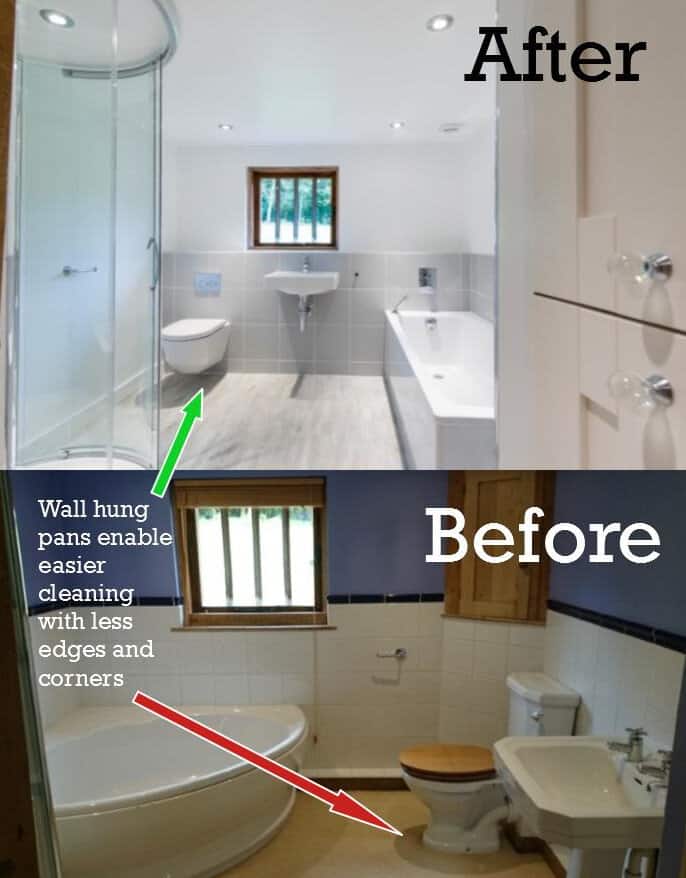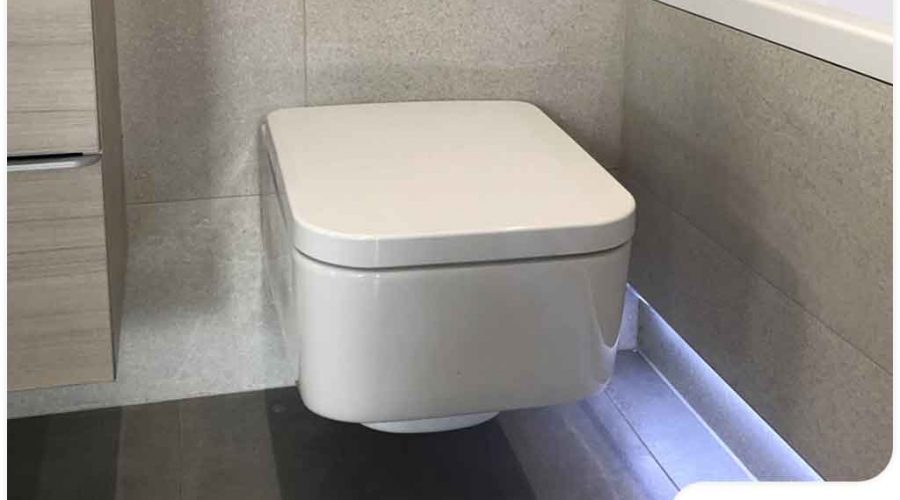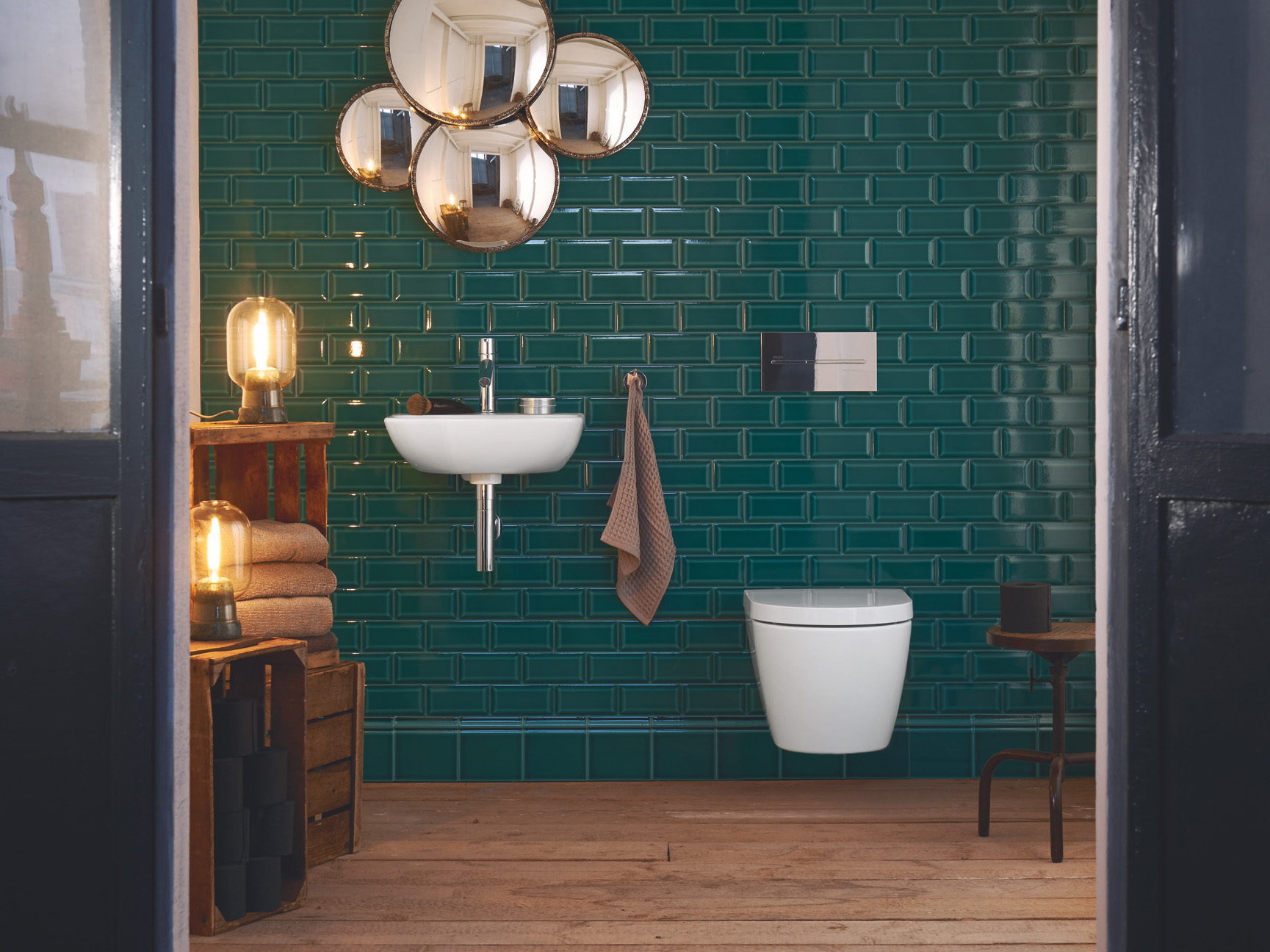Contents
- I. Introduction to Wall-Mounted Toilets
- II. Pros of Wall-Mounted Toilets
- III. Cons of Wall-Mounted Toilets
- IV. Factors to Consider When Buying a Wall-Mounted Toilet
- V. Frequently Asked Questions about Wall-Mounted Toilets
- 1. How does a wall-mounted toilet work?
- 2. Are wall-mounted toilets more expensive than traditional floor-mounted toilets?
- 3. Can any bathroom support a wall-mounted toilet?
- 4. Are wall-mounted toilets difficult to clean?
- 5. Can wall-mounted toilets be repaired easily?
- 6. Are wall-mounted toilets suitable for all users?
- 7. Can I install a wall-mounted toilet myself?
- 8. Are there any specific maintenance requirements for wall-mounted toilets?
- 9. Can I use any toilet seat with a wall-mounted toilet?
- 10. Are wall-mounted toilets suitable for small bathrooms?
I. Introduction to Wall-Mounted Toilets

Wall-mounted toilets, also known as wall-hung toilets or floating toilets, are a popular choice for modern bathrooms. These toilets are mounted directly onto the bathroom wall, creating a sleek and minimalist look. Unlike traditional floor-mounted toilets, wall-mounted toilets have their cisterns hidden behind the wall, saving valuable space and making cleaning easier.
One of the main advantages of wall-mounted toilets is their space-saving design. By eliminating the need for a visible cistern and pedestal, these toilets create a more open and spacious bathroom environment. This is particularly beneficial for small bathrooms or powder rooms where space is limited.
Another benefit of wall-mounted toilets is their ease of cleaning. Without a pedestal or visible pipes, the area beneath the toilet is easily accessible, making it simpler to keep the bathroom clean and hygienic. Additionally, the absence of a pedestal means there are no hard-to-reach areas where dirt and grime can accumulate.
Wall-mounted toilets also offer flexibility in terms of height adjustment. Since they are mounted on the wall, the height can be customized to suit the user’s preference or specific needs. This can be particularly useful for individuals with mobility issues or disabilities.
While wall-mounted toilets offer numerous advantages, it is important to consider a few factors before installing one. The installation process can be more complex compared to traditional toilets, as it involves creating a sturdy wall support and connecting the cistern to the plumbing system. It is recommended to hire a professional plumber for the installation to ensure proper functionality and safety.
II. Pros of Wall-Mounted Toilets

Wall-mounted toilets, also known as wall-hung toilets or floating toilets, have become increasingly popular in recent years. As an experienced plumber and bathroom renovation specialist, I have had the opportunity to install and work with various types of toilets, including wall-mounted ones. In this section, I will highlight the advantages of choosing a wall-mounted toilet for your bathroom.
1. Space-saving design
One of the major benefits of wall-mounted toilets is their space-saving design. Unlike traditional floor-mounted toilets, wall-mounted toilets are mounted directly onto the wall, which frees up valuable floor space. This is particularly advantageous for small bathrooms or powder rooms where space is limited. By eliminating the need for a bulky toilet tank and visible pipes, wall-mounted toilets create a sleek and minimalist look.
2. Easy to clean
Another advantage of wall-mounted toilets is their ease of cleaning. Since the toilet bowl is suspended above the floor, there are no hard-to-reach areas or crevices where dirt and grime can accumulate. Cleaning the bathroom becomes a breeze as you can easily access and clean the entire floor area beneath the toilet. Additionally, the absence of a visible base or pedestal makes it easier to mop or sweep the floor, resulting in a cleaner and more hygienic bathroom.
3. Adjustable height
Wall-mounted toilets offer the flexibility of adjusting the height according to your preference. This is especially beneficial for individuals with mobility issues or disabilities who may require a higher or lower seat height for added comfort and ease of use. By customizing the toilet height, you can create a more accessible and user-friendly bathroom environment for everyone in your household.
4. Modern and stylish
Wall-mounted toilets add a touch of modernity and elegance to any bathroom. Their sleek and streamlined design complements contemporary and minimalist aesthetics, making them a popular choice among homeowners and interior designers alike. With a wall-mounted toilet, you can create a visually appealing bathroom that exudes sophistication and style.
5. Water-saving features
Many wall-mounted toilets come with water-saving features, such as dual-flush mechanisms. These mechanisms allow you to choose between a full flush for solid waste and a half flush for liquid waste, helping to conserve water and reduce your water bills. By opting for a wall-mounted toilet with water-saving features, you can contribute to environmental sustainability without compromising on performance or functionality.
6. Versatile installation options
Wall-mounted toilets offer versatile installation options, allowing you to place them at a height and location that best suits your needs. Whether you prefer a standard installation height or a higher installation for added accessibility, wall-mounted toilets can be installed accordingly. This flexibility makes them suitable for a wide range of users, including individuals with varying heights and physical abilities.
7. Enhanced durability
Wall-mounted toilets are known for their durability and longevity. Since they are securely attached to the wall, there is less stress placed on the toilet bowl and tank compared to floor-mounted toilets. This reduces the risk of cracks or leaks over time, ensuring that your toilet remains in excellent condition for years to come. Additionally, wall-mounted toilets are often made from high-quality materials that are resistant to stains, scratches, and discoloration.
8. Customizable design options
Lastly, wall-mounted toilets offer a wide range of customizable design options to suit your personal preferences and bathroom decor. From different shapes and sizes to various finishes and materials, you can find a wall-mounted toilet that complements your overall bathroom design. Whether you prefer a classic white porcelain toilet or a more unique and eye-catching design, there is a wall-mounted option available to suit your taste.
III. Cons of Wall-Mounted Toilets

Wall-mounted toilets, while offering several advantages, also come with a few drawbacks that potential buyers should consider. In this section, we will explore some of the cons associated with wall-mounted toilets.
1. Limited Installation Options
One of the main drawbacks of wall-mounted toilets is the limited installation options. Unlike floor-mounted toilets that can be installed in any bathroom, wall-mounted toilets require a specific wall structure to support the weight. This means that if your bathroom doesn’t have a suitable wall or if the wall needs reinforcement, you may need to invest in additional construction work, which can be time-consuming and costly.
2. Higher Installation Costs
Another disadvantage of wall-mounted toilets is the higher installation costs. Due to the complexity of the installation process and the additional construction work that may be required, hiring a professional plumber is often necessary. This can add to the overall cost of installing a wall-mounted toilet, making it a less budget-friendly option compared to floor-mounted toilets.
3. Limited Design Options
While wall-mounted toilets offer a sleek and modern look, they often come with limited design options. Unlike floor-mounted toilets that come in various shapes, sizes, and styles, wall-mounted toilets tend to have a more standardized design. This can be a drawback for those who prefer a wider range of design choices to match their bathroom aesthetics.
4. Maintenance Challenges
Maintaining a wall-mounted toilet can be more challenging compared to a floor-mounted toilet. Since the tank is concealed within the wall, accessing it for repairs or maintenance can be difficult. In case of any issues, such as a leak or a malfunctioning flush mechanism, it may require professional assistance to fix the problem. This can result in additional costs and inconvenience.
5. Limited Weight Capacity
Wall-mounted toilets have a limited weight capacity compared to floor-mounted toilets. While they are designed to support the weight of an average person, they may not be suitable for individuals who are on the heavier side. It is important to check the weight capacity of the specific model you are considering to ensure it can safely accommodate the intended users.
6. Potential for Wall Damage
During the installation or maintenance process, there is a risk of damaging the wall behind the toilet. Any drilling or cutting required to install or repair the toilet can potentially cause damage to the wall surface. This is an important consideration, especially if you have expensive or delicate wall finishes that you want to preserve.
7. Difficulty in Finding Replacement Parts
Due to the less common nature of wall-mounted toilets, finding replacement parts can be more challenging compared to floor-mounted toilets. If a specific component of your wall-mounted toilet needs replacement, it may require ordering the part directly from the manufacturer or a specialty supplier. This can result in longer wait times and potentially higher costs.
While wall-mounted toilets offer unique advantages, it is essential to weigh the cons before making a decision. Consider the installation requirements, design limitations, maintenance challenges, and potential costs associated with wall-mounted toilets to ensure it aligns with your specific needs and preferences.
IV. Factors to Consider When Buying a Wall-Mounted Toilet

When it comes to choosing a wall-mounted toilet, there are several factors that you need to consider. As an experienced plumber with years of expertise in the field, I have come across various types of wall-mounted toilets and have learned what works best for different situations. In this section, I will share with you the key factors that you should keep in mind when buying a wall-mounted toilet.
1. Space and Installation
The first thing you need to consider is the available space in your bathroom and the installation requirements of the wall-mounted toilet. These toilets are designed to save space and create a sleek, modern look in your bathroom. However, you need to ensure that you have enough wall space to accommodate the toilet and that the wall is strong enough to support its weight.
Before making a purchase, measure the dimensions of your bathroom and consult with a professional plumber to determine if your bathroom is suitable for a wall-mounted toilet. They will be able to assess the structural integrity of your walls and provide you with the necessary guidance.
2. Design and Style
Wall-mounted toilets come in a variety of designs and styles to suit different preferences and bathroom aesthetics. Consider the overall design theme of your bathroom and choose a toilet that complements it. Whether you prefer a minimalist, contemporary design or a more traditional look, there is a wall-mounted toilet out there for you.
Additionally, think about the functionality of the toilet. Some models come with additional features such as bidet functions or heated seats. Evaluate your needs and choose a toilet that offers the features that are important to you.
3. Water Efficiency
Water efficiency is an important factor to consider when buying any toilet, including wall-mounted ones. Look for toilets that are labeled as WaterSense certified, as these models meet the Environmental Protection Agency’s criteria for water efficiency.
By choosing a water-efficient wall-mounted toilet, you can reduce your water consumption and contribute to environmental conservation. Not only will this benefit the planet, but it will also help you save on your water bills in the long run.
4. Durability and Quality
Investing in a high-quality, durable wall-mounted toilet is essential to ensure its longevity. Look for toilets made from sturdy materials such as ceramic or porcelain, as these are known for their durability. Check customer reviews and expert recommendations to get an idea of the quality and reliability of different brands and models.
Remember, a toilet is an essential fixture in your bathroom that you will use daily, so it’s important to choose one that can withstand regular use and last for years to come.
5. Maintenance and Cleaning
Keeping your wall-mounted toilet clean and well-maintained is crucial for hygiene and longevity. Consider the ease of cleaning when choosing a toilet. Look for models with smooth surfaces and concealed trapways, as these are easier to clean and prevent the buildup of dirt and bacteria.
Additionally, check if the toilet comes with a reliable flushing system that effectively removes waste with each flush. A powerful and efficient flushing mechanism will help keep your toilet clean and reduce the need for frequent maintenance.
6. Budget
Lastly, consider your budget when buying a wall-mounted toilet. Prices can vary significantly depending on the brand, features, and quality of the toilet. Set a budget range and explore different options within that range. Remember to prioritize quality and functionality over price, as a well-made toilet will provide better long-term value.
Take the time to research and compare prices from different retailers to ensure that you are getting the best deal without compromising on quality.
By considering these factors when buying a wall-mounted toilet, you can make an informed decision and choose a toilet that meets your needs and preferences. Remember to consult with a professional plumber for expert advice and assistance with the installation process.
V. Frequently Asked Questions about Wall-Mounted Toilets
When it comes to bathroom renovations or new construction, wall-mounted toilets have become increasingly popular due to their sleek design and space-saving benefits. However, many people still have questions about these unique fixtures. In this section, we’ll address some of the most frequently asked questions about wall-mounted toilets.
1. How does a wall-mounted toilet work?
A wall-mounted toilet is installed directly onto the bathroom wall, with the tank hidden behind the wall or in a separate unit. The toilet bowl is suspended off the ground, giving it a floating appearance. The waste is flushed through a concealed plumbing system, providing a clean and minimalist look.
2. Are wall-mounted toilets more expensive than traditional floor-mounted toilets?
While wall-mounted toilets may have a higher upfront cost due to the additional installation requirements, they can save you money in the long run. These toilets are designed to be more water-efficient, which can lead to lower water bills over time. Additionally, their sleek design can add value to your home.
3. Can any bathroom support a wall-mounted toilet?
Not all bathrooms are suitable for wall-mounted toilets. These toilets require a sturdy and properly reinforced wall to support their weight. It’s essential to consult with a professional plumber or contractor to assess the feasibility of installing a wall-mounted toilet in your specific bathroom.
4. Are wall-mounted toilets difficult to clean?
Contrary to popular belief, wall-mounted toilets are not more challenging to clean than traditional toilets. In fact, their suspended design makes it easier to clean the floor beneath the toilet. Additionally, the absence of a visible base or crevices reduces the risk of dirt and grime buildup.
5. Can wall-mounted toilets be repaired easily?
Wall-mounted toilets can be repaired, but the process may require professional assistance. Since the tank and plumbing are concealed behind the wall, accessing and repairing any issues may be more complex than with traditional toilets. It’s best to hire a qualified plumber with experience in wall-mounted toilet repairs.
6. Are wall-mounted toilets suitable for all users?
Wall-mounted toilets can be a great option for most users, but they may not be suitable for everyone. The height of the toilet bowl and the distance from the wall can vary, so it’s important to choose a model that meets your specific needs. Some wall-mounted toilets also offer additional features like adjustable seat heights for added comfort.
7. Can I install a wall-mounted toilet myself?
Installing a wall-mounted toilet requires advanced plumbing and construction knowledge. It’s recommended to hire a professional plumber or contractor for the installation to ensure it is done correctly and safely. Improper installation can lead to leaks, structural damage, and other costly issues.
8. Are there any specific maintenance requirements for wall-mounted toilets?
Wall-mounted toilets have similar maintenance requirements as traditional toilets. Regular cleaning, checking for leaks, and ensuring the concealed plumbing is functioning properly are essential. It’s also important to avoid placing excessive weight on the toilet or using it as a support, as this can damage the wall and plumbing.
9. Can I use any toilet seat with a wall-mounted toilet?
Most wall-mounted toilets are compatible with standard toilet seats. However, it’s crucial to check the manufacturer’s specifications to ensure compatibility. Some wall-mounted toilets may require specific seat models or have unique mounting systems.
10. Are wall-mounted toilets suitable for small bathrooms?
Yes, wall-mounted toilets are an excellent choice for small bathrooms. Their compact design and suspended installation help save valuable floor space, making the bathroom appear larger and more open. However, it’s essential to consider the overall layout and dimensions of the bathroom before installing a wall-mounted toilet.

Michael Rasmussen is an accomplished writer with a passion for creating engaging content. Born and raised in a small town in Denmark, Michael developed a love for storytelling from a young age. He pursued his education at the prestigious Aarhus University, where he obtained a Bachelor’s degree in Literature and Creative Writing. With a unique perspective on life, Michael’s writing often delves into the intricacies of everyday experiences, including his quirky fascination with toilets. His ability to blend humor and insight has garnered him a loyal following of readers who appreciate his distinctive style. When he’s not busy crafting captivating narratives, Michael enjoys exploring the great outdoors and seeking inspiration in unexpected places.
